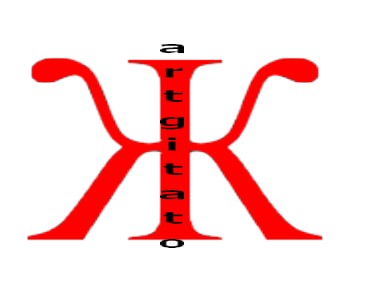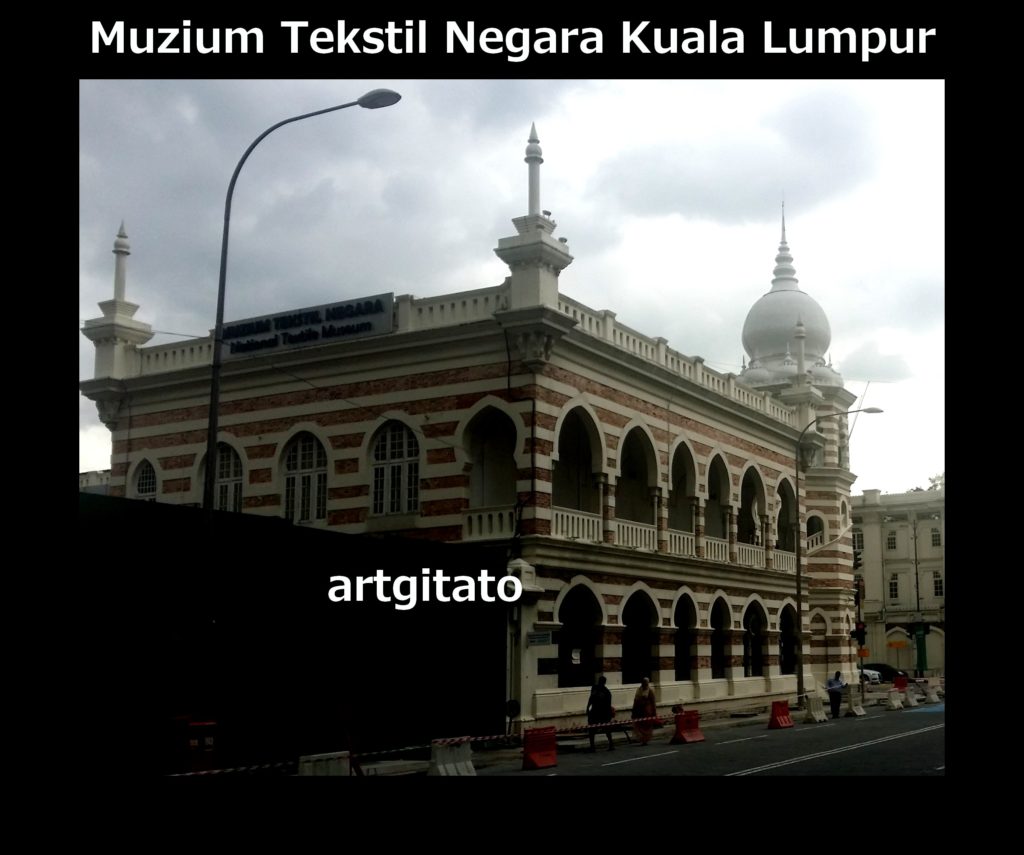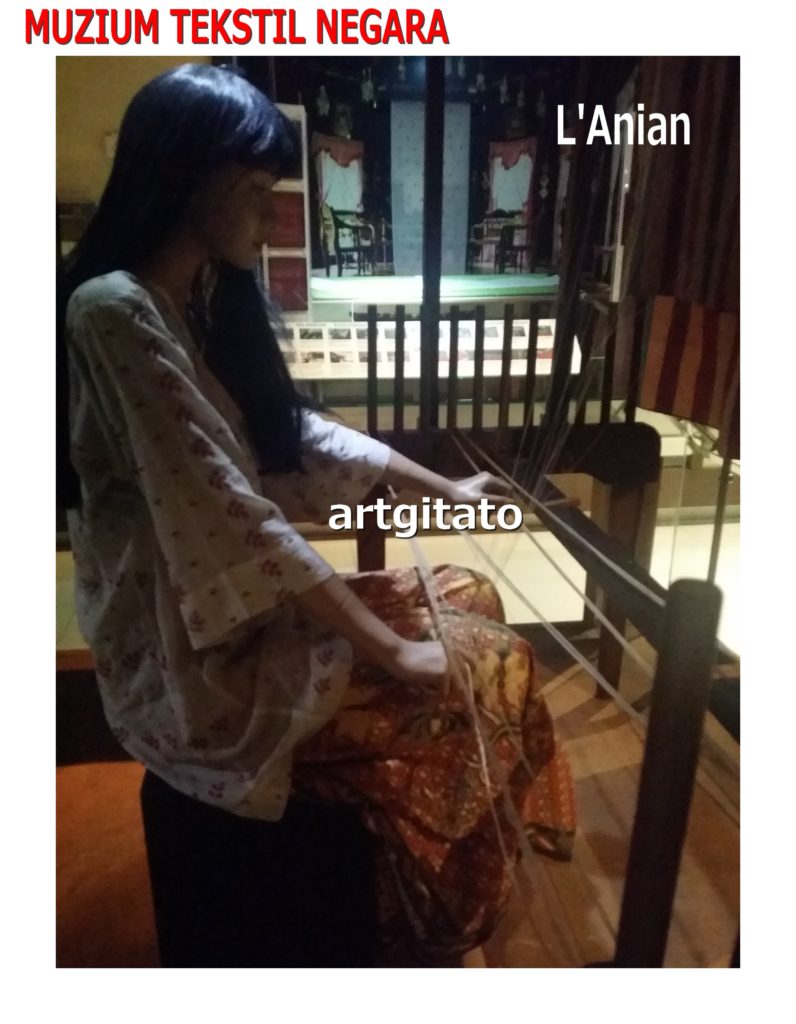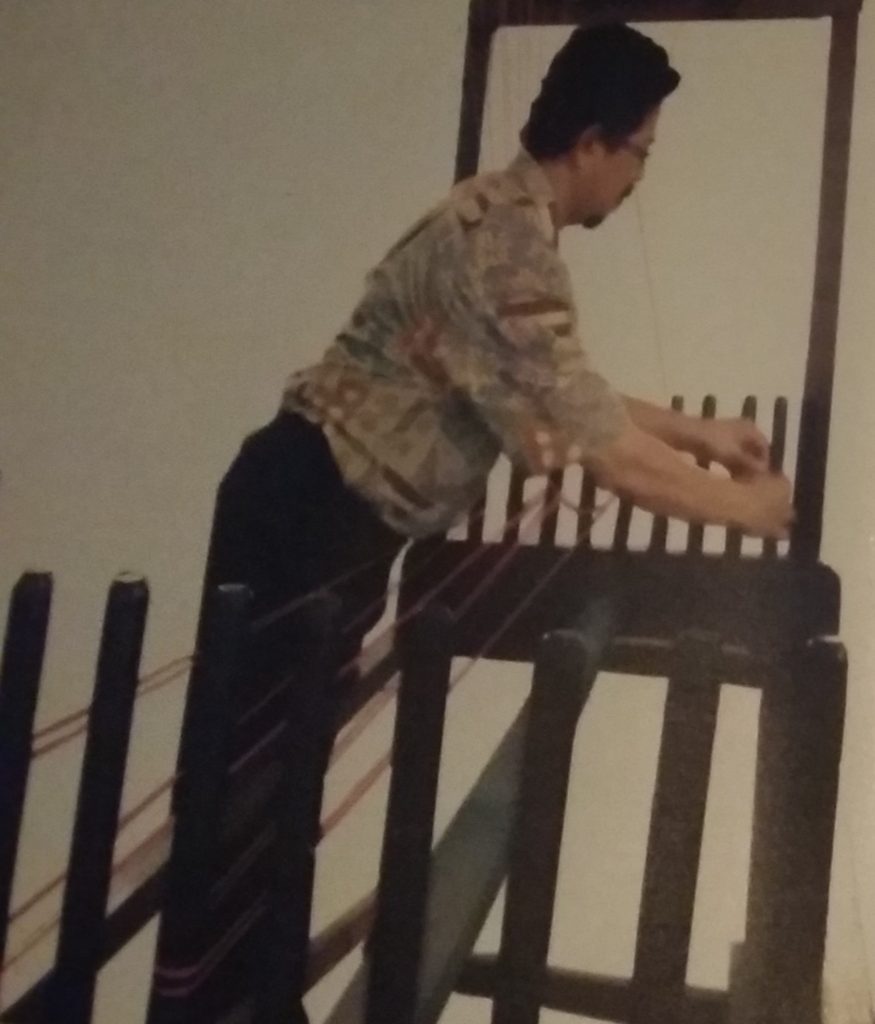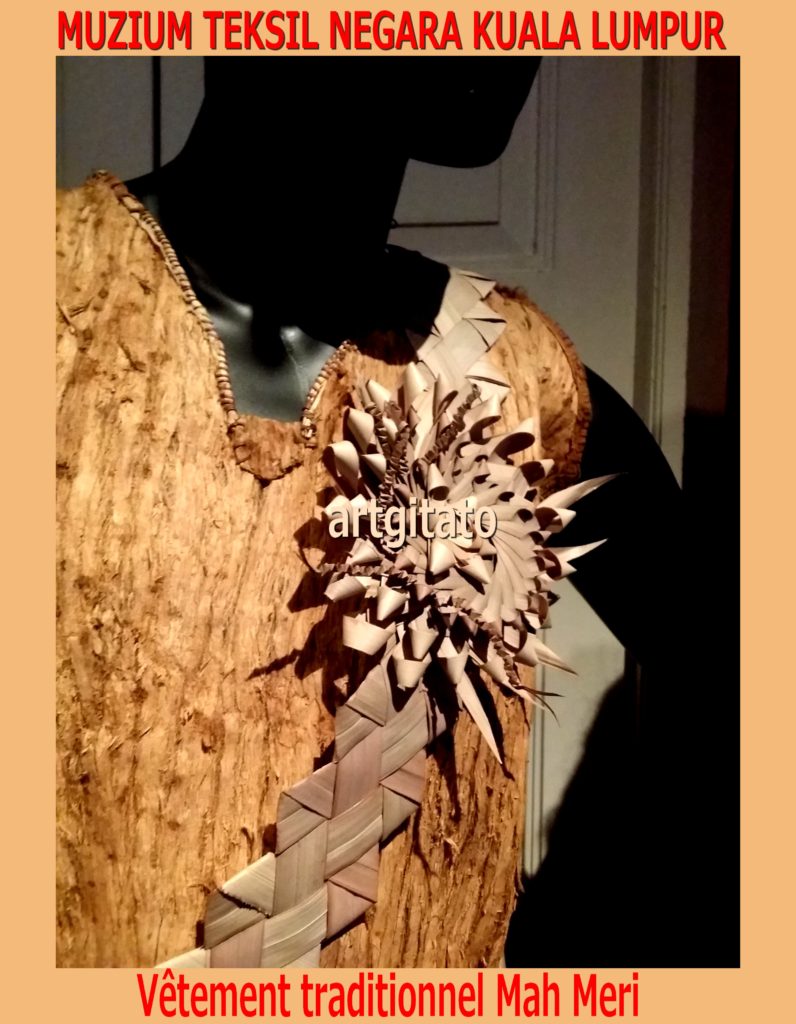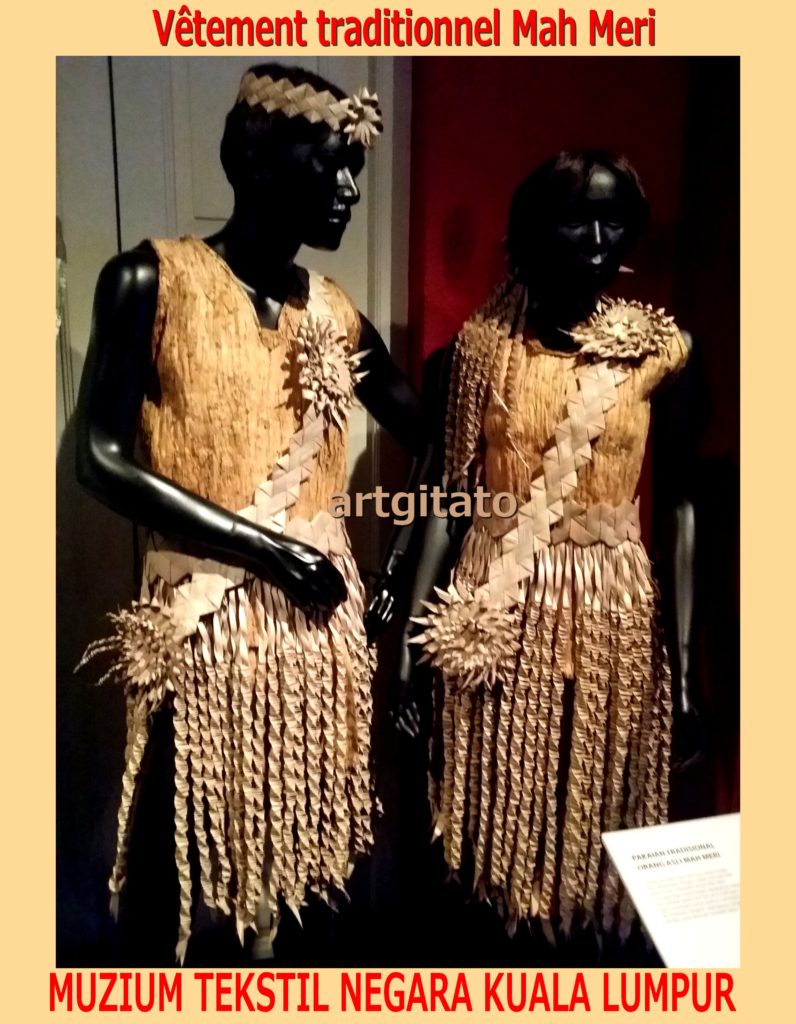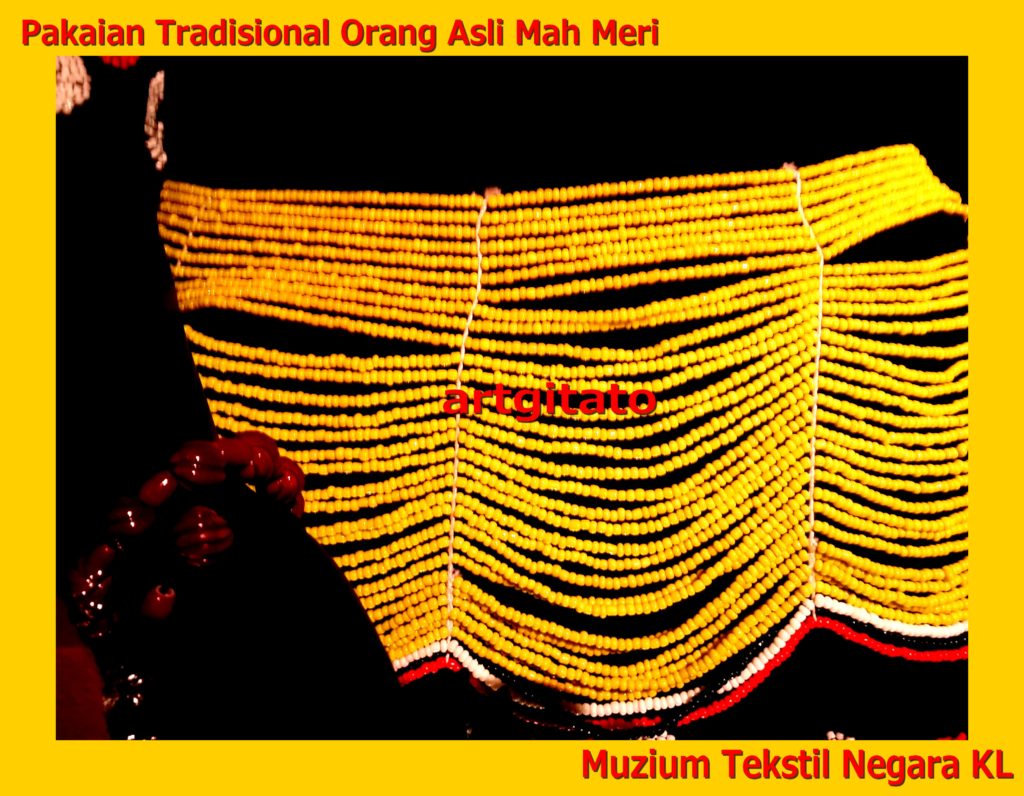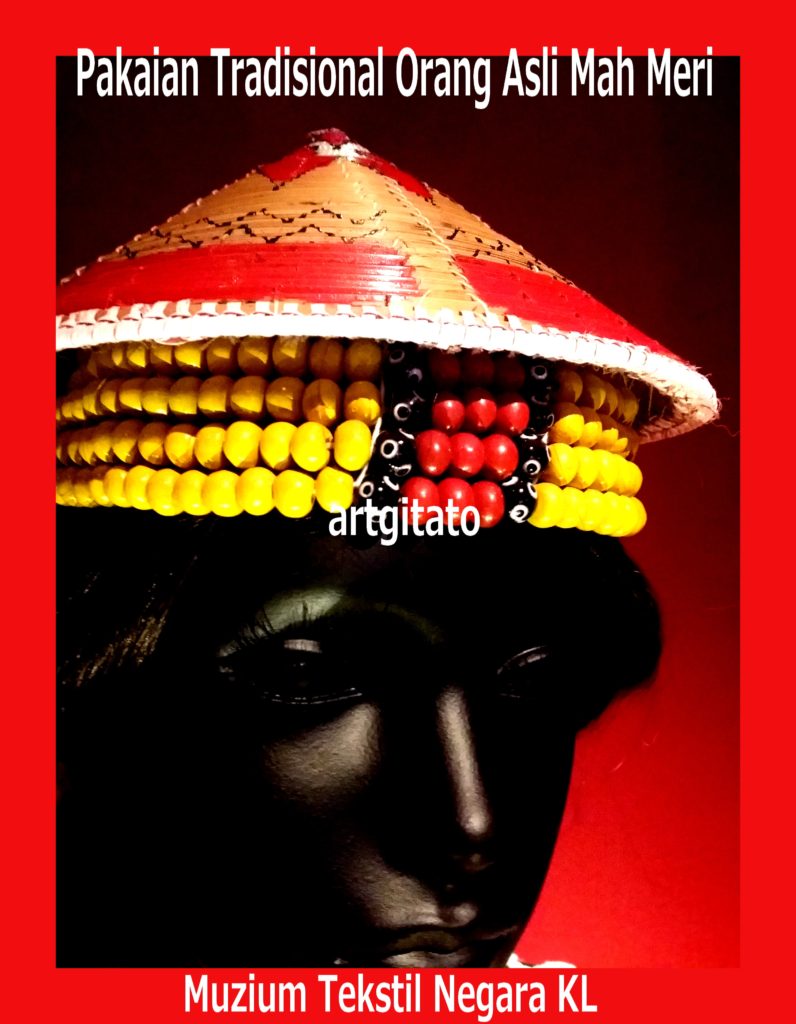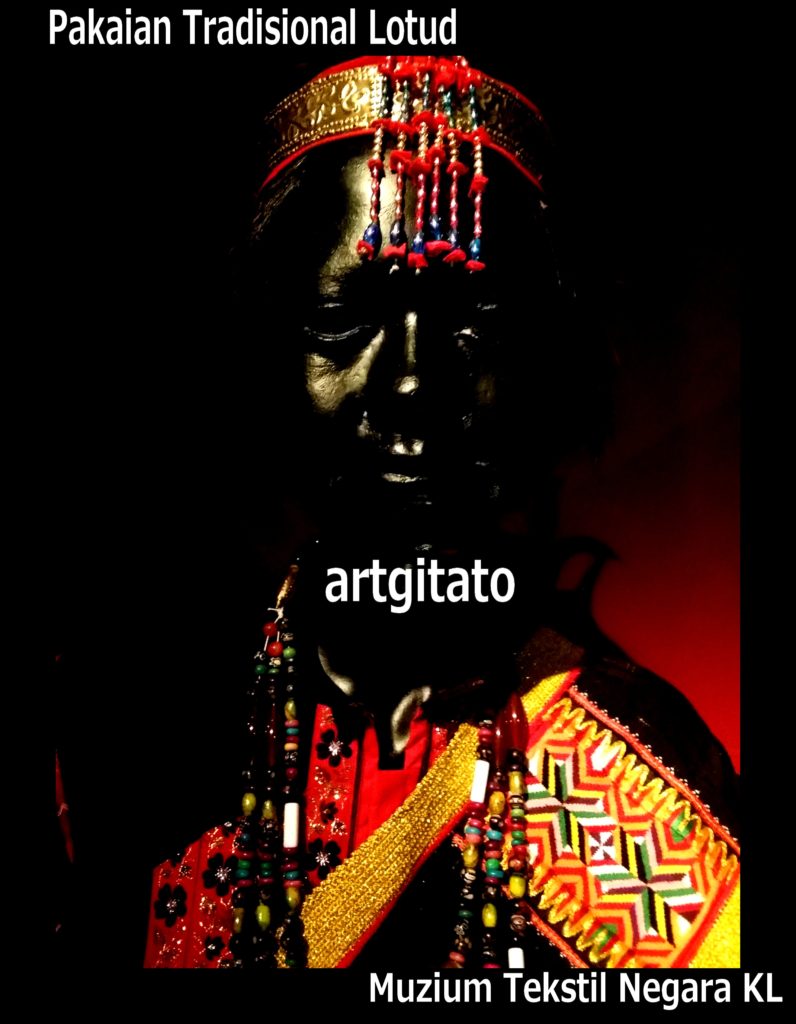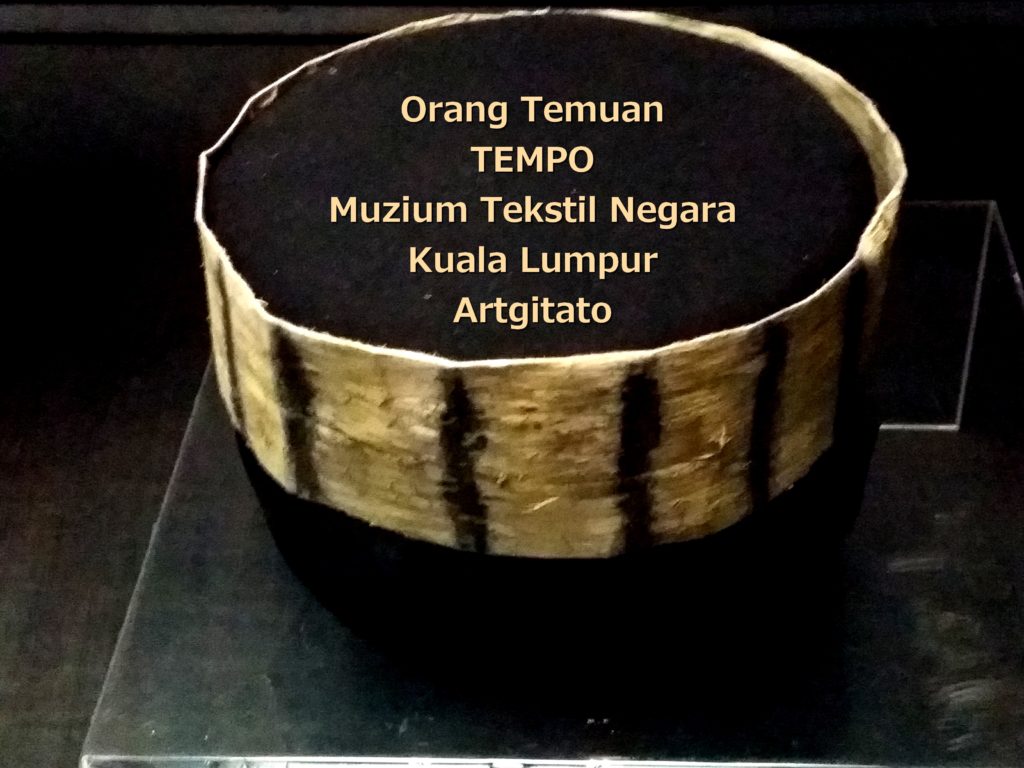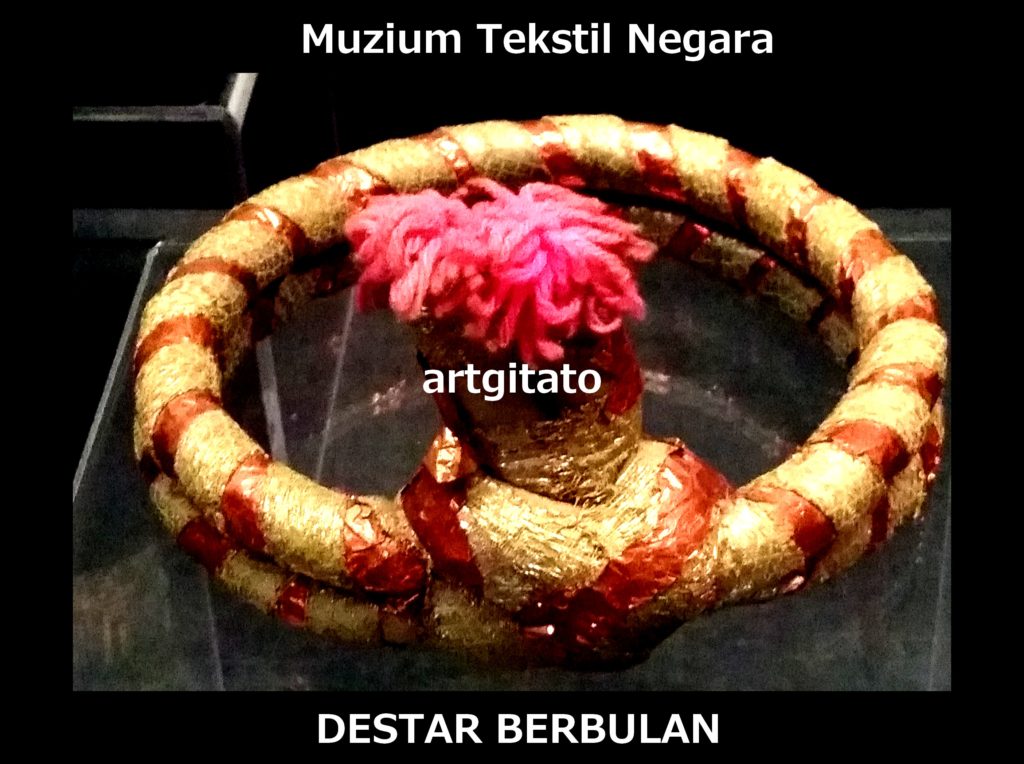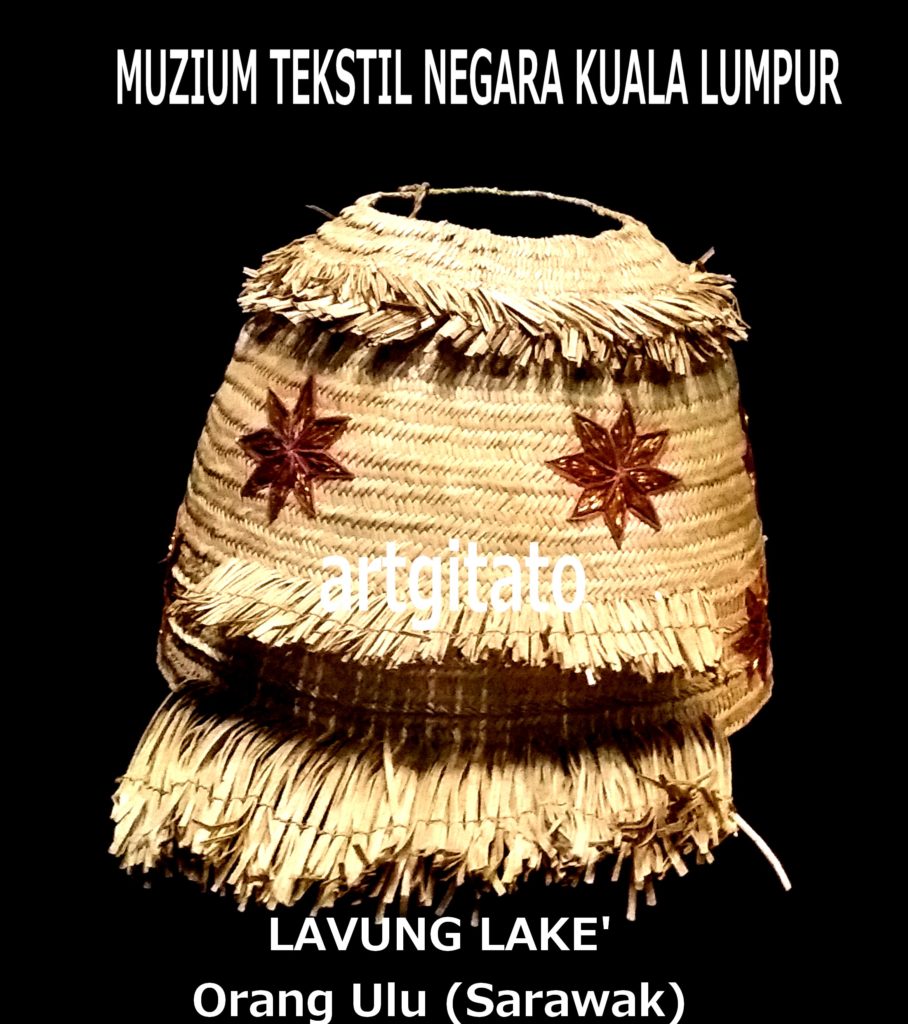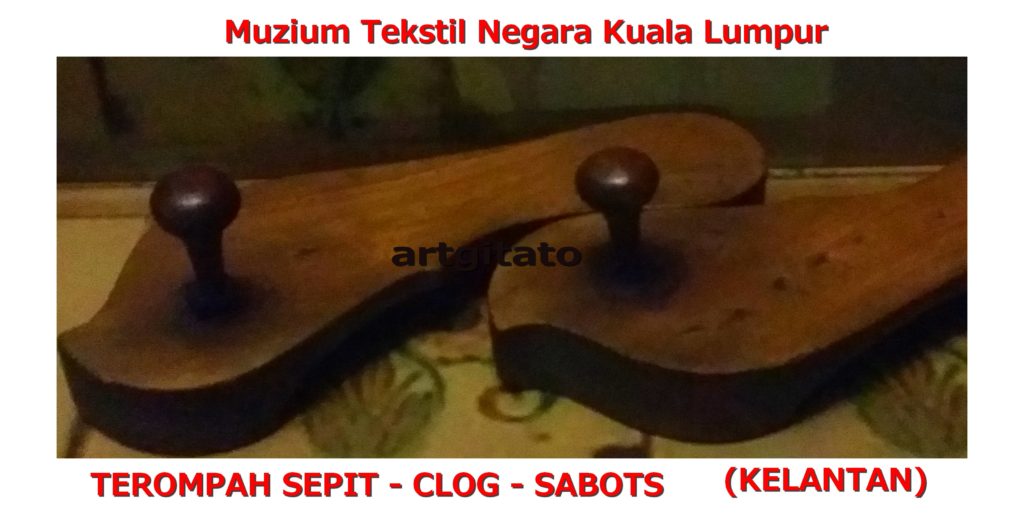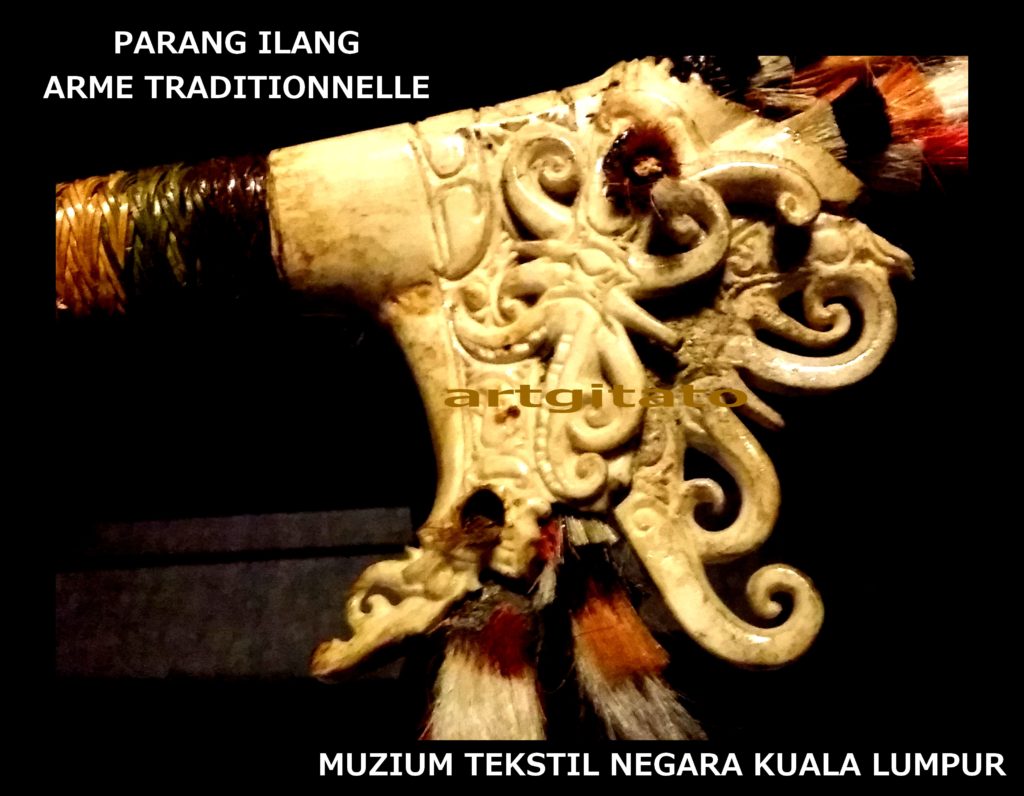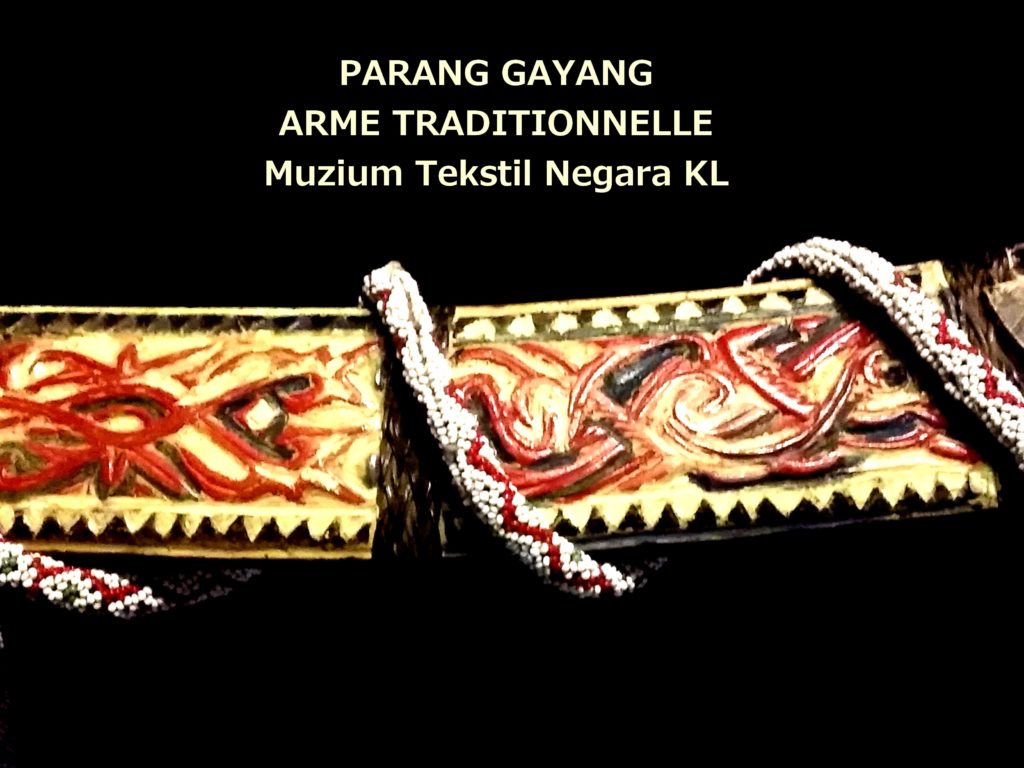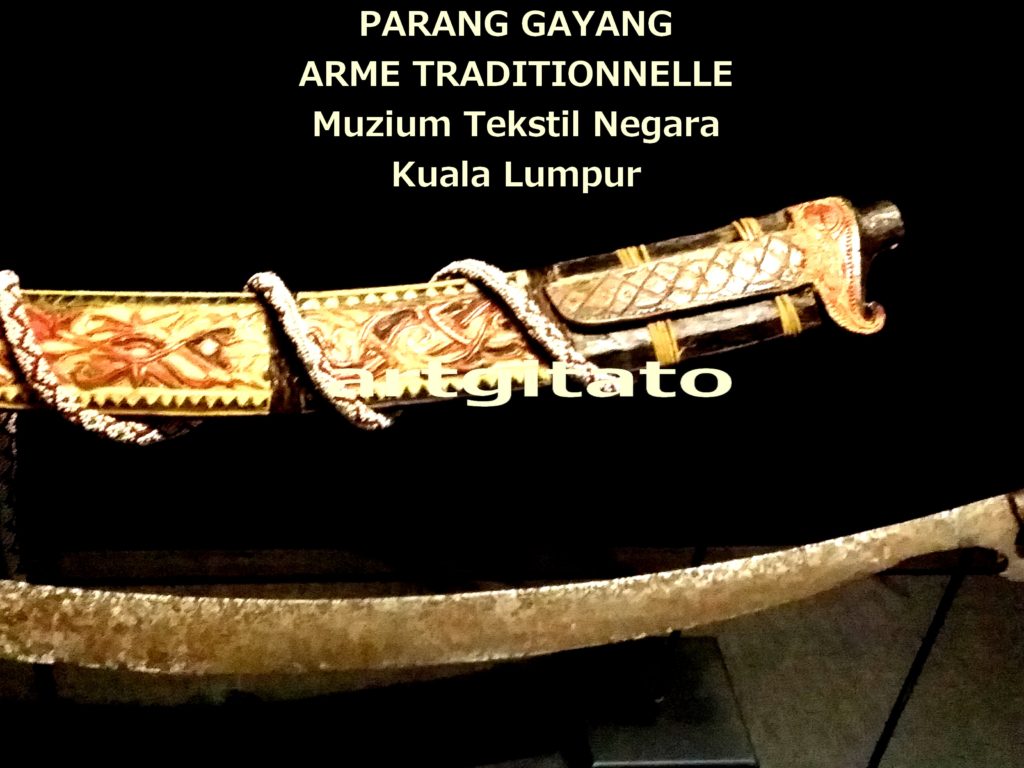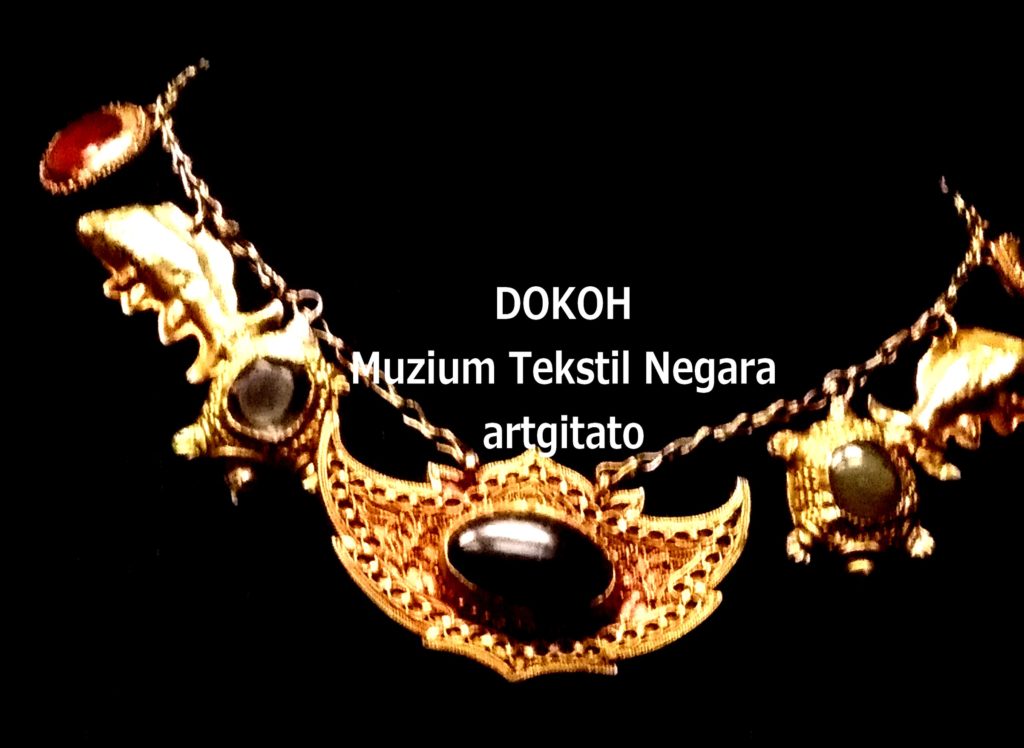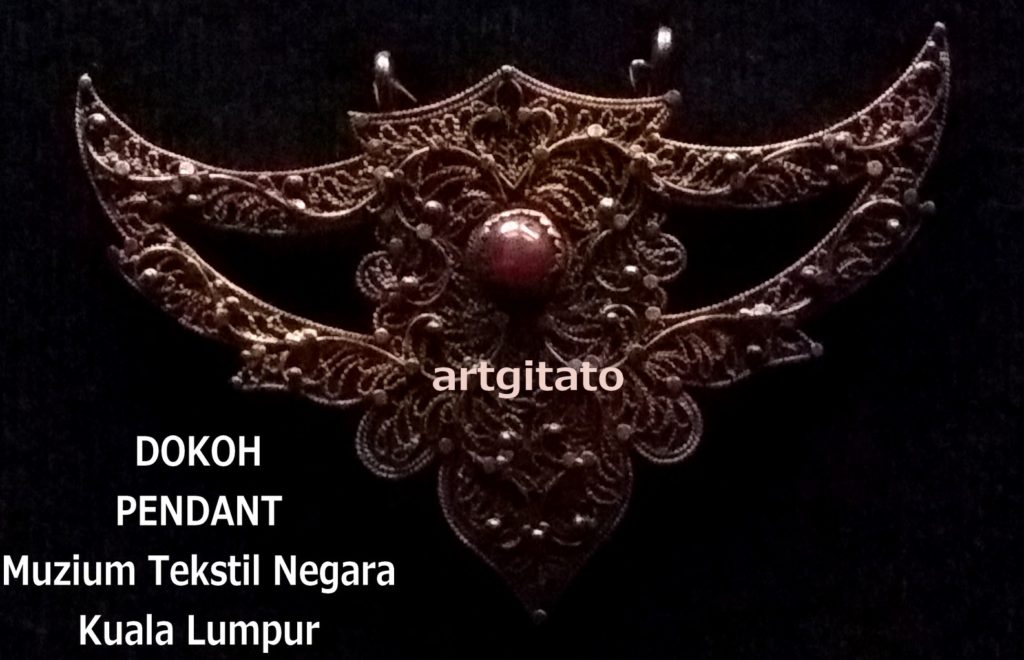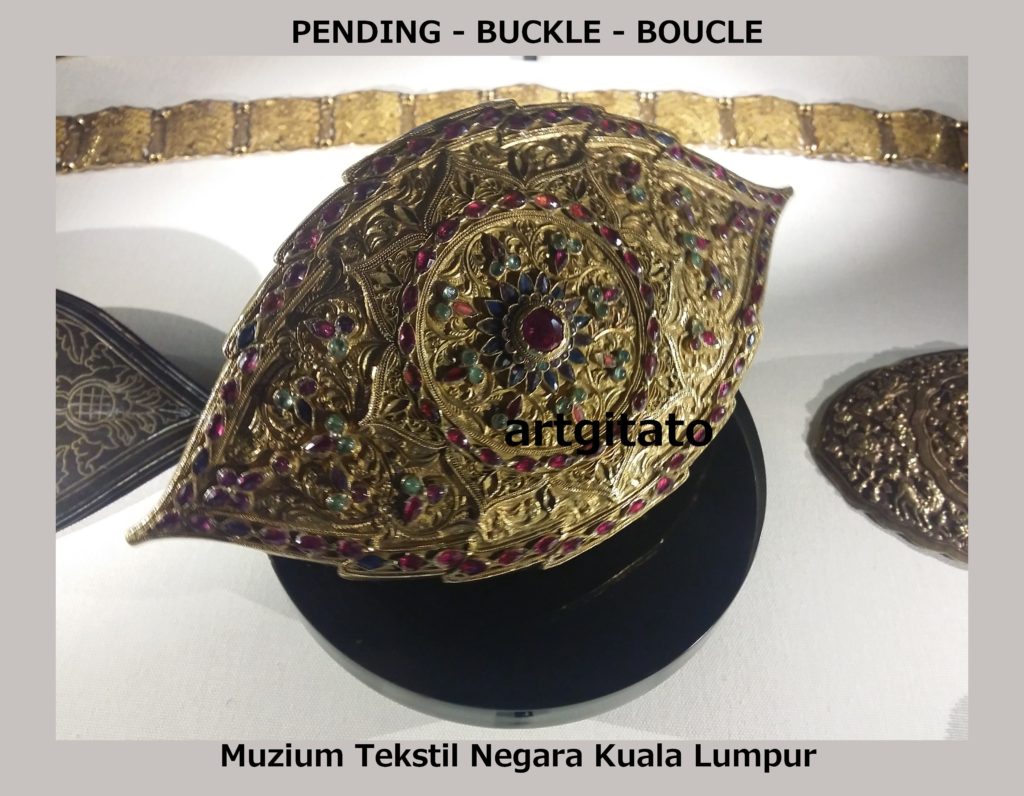 Malaysia
Malaysia
Voyage en Malaisie
PHOTO JACKY LAVAUZELLE
MUSEE NATIONAL DU TEXTILE
MUZIUM TEKSTIL NEGARA
国家纺织博物馆吉隆坡
Visiter Kuala Lumpur
Meneroka kota Kuala Lumpur
Melawat Kuala Lumpur
吉隆坡
Куала-Лумпур
*
MUZIUM TEKSTIL NEGARA
MUSEE NATIONAL DU TEXTILE
National Textile Museum
国家纺织博物馆吉隆坡
**
LE BÂTIMENT – 建设 – Bangunan
**
L’ANIAN
Anian merupakan sejenis alat tradisional untuk menyusun benang loseng mengikut bilangan urat benang bagi menentukan panjang dan lebar kain.
Anian is a traditional equipment for warping the thread in specific lengths and amounts to make a warp for a piece of cloth. (The warp threads are the longitudinal threads secured to frame of the weaving loom).
L’anian est un outil traditionnel pour tirer les fils en fonction de la longueur et la largeur du tissu. Les fils sont ensuite fixés au châssis du métier à tisser.
**
Pakaian Tradisional Orang Asli Mah Meri
Orang Asli Mah Meri Traditional Costume
Vêtement Traditionnel aborigène Mah Meri
Pakaian Tradisional Lotud
Vêtement traditionnel Lotud
Lelaki Lotud Tuaran memakai Sukub (baju) dan Binandus (seluar) dari kain kapas hitam dan diperindah dengan bengkung dari kain atik dan dihiasi dengant Bertungkat.
Vêtement traditionnel Lotud.
L’homme Lotud porte un Sukub (vêtements) et un Binandus (pantalon) en tissu de coton noir et orné d’une ceinture de tissu décoré.
**
ORANG ULU
(Sarawak)
Lavung se’doh
Perhiasan kepala ini diperbuat batang rotan dan dihiasi dengan motif tumbuhan liar daripada manik dan bulu kambing.
Kebiasaannya dipakai oleh wanita Orang Ulu, Sarawak.
Ce couvre-chef est réalisé à partir de bâtons en rotin et décoré de motifs de plantes sauvages, de perles et de laine.
Traditionnellement porté par les femmes de la communauté aborigène Ulu dans l’état de Sarawak (État de Malaisie orientale situé sur l’île de Bornéo).
**
ORANG ULU
(Sarawak)
SA’ONG INU
Topi pelindung matahari Orang Ulu yang lebih dikenali sebagai sa’ong inu dibuat daripada ramb rotan dihiasi dengan manik dan kaca.
Orang Ulu beaded sunhat made from rattan tassel and decorated with beads and glass
Couvre-chef Ulu décoré avec des perles et du verre.
**
ETAT DE SABAH
SERAUNG – SIUNG
HAT – Chapeau
Hiasan kepala ini dikenali sebagai seraung atau suing dan berasal dari daerah Papar, Sabah. Dibuat daripada anyaman buluh dendan motif geometrik. Hiasan kepala ini dipakai sebagai pelengkap pakaian tradisional wanita Kadazan Papar.
This hat is know as seraung or siung by the Kadazan people of Papar, Sabah. Made of bamboo stripes and decorated with geometric motifs. It is worn by Kadazan Papar women as part of their ceremonial costumes.
Etat de Sabah (Etat de Malaisie orientale situé sur l’île de Bornéo – Etat voisin du Sarawak)
Coiffe des Kadazans de Papar, Etat de Sabah, faite de motifs géométriques en bambou tissé. Elle est portée traditionnellement par les femmes du Sabah comme costume d’apparat.
**
ORANG TEMUAN
Population Temuan
Le TEMPO
Hiasan kepala diperbuat kulit kayu terap berbentuk selinder dan dihiasi warna hitam dan kuning berjalur berdiri. Dipakai oleh suku kaum lelaki Temuan untuk upacara adat dan perayaan.
A cylindrical headgear made from terap with black and yellow vertical lines. Worn by Temuan men for ceromies and célébrations.
Coiffe cylindrique décorée de rayures noires et jaunes. Portée par les hommes de la tribu Temuan lors des cérémonies et des célébrations.
Les Temuans se trouvent dans les Etats de Selangor, Pahang, Johor, Negeri Sembilan et de Malacca.
**
HIASAN KEPALA ORANG ASLI
ORANG ASLI HEADGEAR
COIFFE ORANG ASLI
Hiasan kepala yang dianyam daripada daun nipah oleh masyarakat orang Asli. Hiasan kepala kini hanya dipakai untuk upacara-upacaran tertentu sahaja.
A headgear made from palm leaves by Orang Asli community. The headgear is worn during special occasions.
Coiffe tissée à partir de feuilles de palmier par les communautés autochtones. Cette oiffe est maintenant utilisée pour certaines cérémonies.

**
SUNDI BAJAU
COIFFE DE LA COMMUNAUTE BAJAU,
LES GITANS DE LA MER
Sundi dari kain dastar dengan benang kapas berwarna-warni berentuk ikatan tertentu dan dipakai oleh lelaki bajau, Sabah.
A headgear from cloth woven with colorful cotton yarn and worn by Bajau men in Sabah.
Coiffe composée de fil de coton coloré, portée par les hommes Bajau à Sabah.

**
DESTAR BERBULAN
ETAT DU PERAK
Hiasan kepala berbentuk lilitan kain dua warna yang dipintal berbentuk bulat sebanyak dua pusingan dan diikat puncanya. Dipakai oleh pengantin lelaki di negeri Perak.
A headdress weaved with two different coloured fabric, double layered and tied with a knot. Worn by a groom during wedding cérémonies in Perak.
Coiffe tissée avec deux tissus de couleur différente attachés avec un noeud. Portée par un marié lors des cérémonies de mariage dans le Perak (nord de la Péninsule Malaise)
**
TENGKOLOK
Tengkolok darripada songket dengan ikatan getam pekasam. Dipakai oleh lelaki Malayu dari golongan kerabat raja untuk upacara-upacara rasmi di negeri Kelantan.
A tengkolok made from songket using the getam pekasam folding method. Worn by aristocratic Malay men for special occasions in Kelantan.
Coiffe portée par les hommes malais aristocratiques pour les occasions spéciales dans le Kelantan (Nord-est de la Péninsule, état frontalier avec la Thaïlande).
**
KEPATU TUNJANG / SILONG
Perhiasan kepala daripada halus dianyam bulat dengan dipenuhi hiasan muncung yang tajam di bahagian atas. Dipakai oleh lelaki Iban, Sarawak.
Ketapu is a hand woven rattan / thinly cut bamboo slices head cover with pointed top. Worn by Iban in Sarawak.
Le Ketapu est un turban tissé en rond avec une pointe à son sommet. Ce Ketapu est porté par les hommes Iban dans le Sarawak.
Blink est une couverture coupe de tranches de rotin / bambou tissées à la main finement la tête avec haut pointu. Porté par Iban au Sarawak.
La communauté Iban appartient au groupe des Dayak dans l’Etat du Serawak.
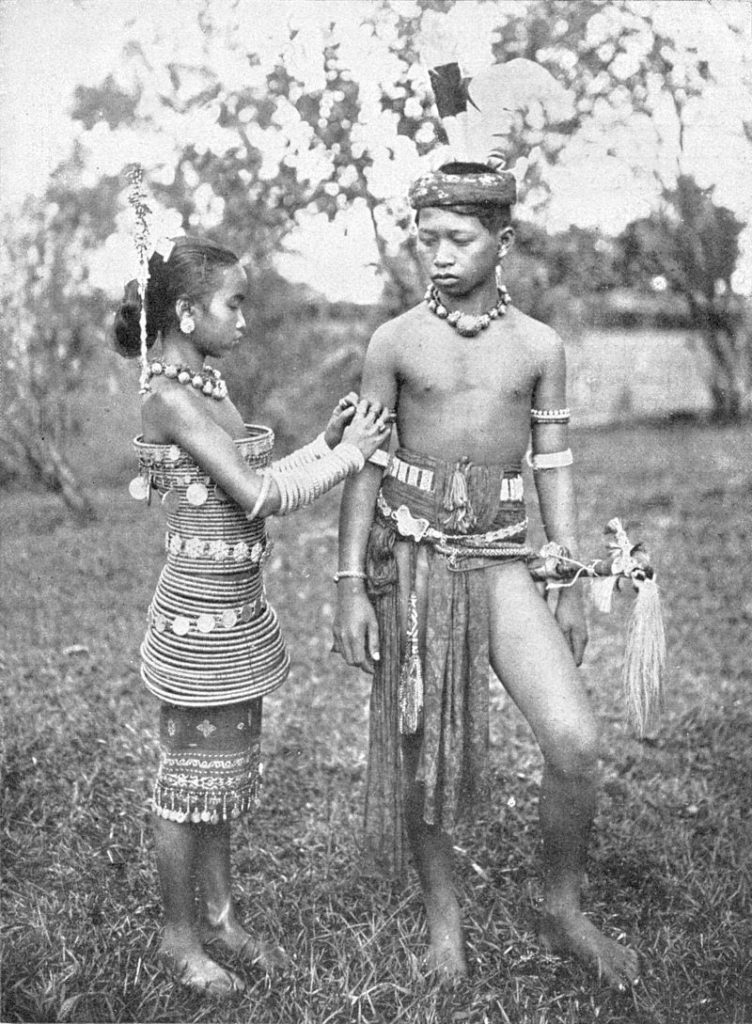 Garçon et fillette dayak vers 1920 Charles Hose
Garçon et fillette dayak vers 1920 Charles Hose
(Photo non présente dans le Musée du Textile)
**
LAVUNG LAKE’
Sejenis penutup kepala diperbuat daripada daun pandan dipakai oleh lelaki Orang Ulu untuk kegunaan harian di Sarawak.
This hat or traditional headdress is made from pandan (screwpine) leaves. It is worn by Orang Ulu men in Sarawak
Cette coiffe, ou chapeau traditionnel, est fabriqué à partir de feuilles de pandanus ( baquois). Il est porté par les hommes Orang Ulu au Sarawak (État de Malaisie orientale situé sur l’île de Bornéo).
**
SIGAR DAN SIWOT
SIGAR AND SIWOT
SIGAR ET SIWOT
Sigar adalah lilitan kepala yang diperbuat daripada rotan dan dihiasi dengan plet perakmas atau emas. Siwot lalah pehiasan yang dicucuk pada rambut. Diperbuat daripada bulu ayam berwarna hitam dan dilikat dengan kain merah. Dipakai oleh wanita Lotud, Sabah.
The sigar is a headband made of rattan, and inlaid with embossed strips of silver, gold leaf or gold. The siwot is a hair ornament which is stuck into the hair bun. It consists of black chicken feathers tied together with red cloth. Worn by Lotud women, Sabah.
Le Sigar est un bandeau en rotin, incrusté de bandes d’argent, de feuille d’or ou d’or. Le Siwot est un ornement composé de plumes noires de poulet attachées avec un tissu rouge. Cet ensemble est porté par les femmes Lotud, Sabah.
(Un des deux Etats Malais de Bornéo, avec le Sarawak).
**
TEROMPAH SEPIT
CLOG – SABOTS
Terompah Sepit yang dibuat daripada kayu nanka mankala penyepit atau putingnya diperbuat daripada tembaga putih. Dipakai oleh kaum wanita dan diperolehi dari Kelantan pada awal tahun 1900.
A wooden clog attached with white nipple. Worn by women and acquired from Kelantan dated early 1900.
Sabots en bois attachés avec mamelon blanc. Portés par les femmes dans le Kelantan au début des années 1900. (Nord-est de la Péninsule, état frontalier avec la Thaïlande).
**
PARANG ILANG
ARME TRADITIONNELLE
(Bidayuh, Iban and Penan people)
(Groupes Bidayuh, Iban et Penan)
**
PARANG GAYANG
**
DOKOH
PENDANT
PENDENTIF
Doko emas bersepuh tukang Cina yang mengandungi sekeping dokoh besar dan 6 buah anak dokoh. Dokoh besar berukir naga lambang status dan ditulis dengan makam agar pemakainya selamat. Khazanah dari keluarga Peranakan sekitar awal kurun ke 19.
This pendant was crafted by Chinese craftsman featuring a large main piece and six smaller ones. The main piece was embossed with figure of a dragon to signify status of the wearer and engraved with an inscription to keep the wearer safe. Aheirloom of the Peranakan Chinese dated circa early 19th century.
Dokoh plaqué or ; pièce réalisée par un artisan chinois contenant un grand pendentif et 6 pièces plus petites.
La pièce principale représente un dragon afin de protéger la personne qui le portait. Date du début du 19ème siècle.
**
DOKOH
PENDANT
PENDENTIF
Dokoh emas dihiasi dengan batu akek, dua ekor kura-kura, dua ekor ikan emas dan dua loket. Dipakai oleh anak perempuan Cina di Kelantan sebagai azimat. Buatan tukang Melayu abad ke 19.
A gold pendant attached with a pair of tortoise and goldfishes ans two lockets worn by Chinese girl in Kelantan as a amulet. It’s a Malay craftsmanship dated 19th century.
Pendentif en or orné de deux tortues et poissons porté par une fille chinoise du Kelantan comme amulette. Fabriqué par un artisan au 19ème siècle.
DOKOH
PENDANT
PENDENTIF
A gold stained pendant finely crafted with foliated of filigree gold beads and granules work. The center was studded with a ruby gem. It’s a Malay workmanship from Aceh dated early 19th century.
DOKOH
PENDANT
PENDENTIF
Buah dokoh daripada emas padu Buatan tukang Melayu dari Kelantan tahun 1800. la diukir dengan pintalan dawai bertatahkan permata hijau dan merah. Milik asal kerabat diraja Kelantan.
A solid gold pendant made by a Malay craftsman from Kelantan dated 1800. The pendant was crafted with fine filigree and gold beads mounted with red and green gems stones. A heirloom of the Kelantan royal family.
Pendentif en or massif fabriqué par un artisan malais du Kelantan vers 1800. Le pendentif a été fabriqué avec de fines perles et des pierres rouges et vertes. Héritage de la famille royale du Kelantan.
**
RANTAI PAPAN
CHAINETTE – PENDANT – PENDENTIF
Rantai papan dari Perak buatan tukang Cina. Rantai koleksi terpilih direka dan diukir hialus dengan rangkaian yang kemas dan cantik. Dipakai oleh pengantin Melayu dan peranakan awal tahun 1900. Berasal dari Melaka.
A silver pendant or plank neck chain was designed by a Chinese craftsman from Melaka in early 1900. It’s crafted with fat embossed pièces with floral motifs join together by several parallel chains. Worn by Malay or Chinese during wedding ceremony.
Pendentif en argentconçu par un artisan chinois de Melaka au début de 1900. Il est conçu avec des pièces en relief gracieuses avec des motifs floraux réunis par plusieurs chaînes parallèles. Ce pendentif est orté par des Malais ou des Chinois pendant la cérémonie de mariage.
**
GELANG KAKI
ANKLETS
BRACELETS
Sepasang gelang kaki emas bermotif flora. Butang tukang emas Cina dipakal oleh wanita Nyonya dari Pulau dan Melaka seawal tahun 1900.
A pair of hollow gold anklets with floral motif. Both ends are in the shape of a flower Chinese workmanship and worn by Nyonya ladies in Penang and Malacca, circa early 1900.
Une paire de bracelets en or orné de motifs floraux. Les deux extrémités ont la forme d’une fleur ; fabrication chinoise. Bracelets portés par des femmes Nyonya (descendants des premiers immigrants chinois) à Penang (côte Nord-ouest de la Péninsule Malaise) et à Malacca, vers 1900.
**
GELANG KAKI
ANKLETS
BRACELETS
Sepasang gelang kaki emas yang bermotifkan flora diukir timbul. Buatan tukang emas Cina dipakai oleh wanita Melayu dari Melaka awal tahun.
A pair of gold anklets embossed with foral motifs. Designed by Chinese craftsmen and worn by Malay women in Malacca in the early 1900s.
Paire de bracelet en or gravée de motifs floraux. Bijoux fabriqués en Chine et portés par les femmes Malaise à Melaka au début des années 1900.

**
KERONGSANG
BROOCH
BROCHE
Sebutir kerongsang ibu berbentuk buah thor atau hati dibuat daripada emas dan bertatahkan permata delima dan sebutir nilam. Dipakai oleh wanita Melayu buatan tukang Cina, awal tahun 1900.
A heart-shaped brooch made of gold and mounted with rubies and a single emerald. Worn by Malay women, made by Chinese craftsmen, early 1900s.
Broche en forme de cœur en or et montée avec des rubis et une seule émeraude. Portée par les femmes Malaise. Fabriquée par des artisans chinois, début des années 1900.
**
KERONGSANG
BROOCH
BROCHE
Sebutir ibu kerongsang berbentuk buah pic daripada Perak dan bertatahkan permata intan. Dipakal oleh Nyonya dari Melaka. Buatan tukang cina, awal tahun 1900.
A silver brooch, in the shape of a peach and studded with roughly-cut colourless stones. Worn by the Nyonya of Malacca. Made by Chinese craftmen, circa early 1900.
Broche en argent en forme de pêche parsemée de pierres. Portée par les Nyonya de Malacca. Fait par des artisans chinois, début 1900.
**
RANTAI MANIK
BEAD NECKLACE
COLLIER
Rantai manik halus berwarna warni dilapis-lapis menjadi lebih besar. Bahagian bawah dihiasi taring-taring atau gigi binatang. Dipakai oleh masyarakat Dayak dari kepulauan Borneo bertarikh 1800.
A ceremonial necklace made from strands of multi-coloured beads and decorated with small animal claws or teeth. Worn by the Dayak people of Borneo. Circa 1800.
Collier de perles fabriqué à partir d’éclats de perles multicolores et décoré avec de petites griffes d’animaux ou des dents. Porté par le peuple Dayak (Orang Asli vivant dans la forêt de Bornéo). Vers 1800.
**
CEMBUL
RECEPTACLE
RECIPIENT
Cembul bertutup emas digunakan sebagai bekas mengisi. Cembul diukir penuh motif bucu piramid dan bunga timbul. Buatan tukang Siam dari Thailand tahun 1800.
A small gold container with cover for areca nuts or gambir with pyramids and flowers. Made by Thai craftsman, Thailand, circa 1800.
Petit récipient en or avec couvercle orné de pyramides et de fleurs. Fait par des artisans thaïlandais. Thaïlande, vers 1800.
**
PENDING
BUCKLE
BOUCLE
Permukaannya diukir timbul pintalan tali dan bijirin emas bermotifkan bunga kiambang dan sulur. Permukaan pending ditatah permata berbagai warna. Alat kebesaran raja yang berasai dari kelantan abad ke 18. Seberat 334.7 gram, ia telah disenaraikan di dalam Daftar Warisan Kebangsaan Tahun 2009 pada 14 Februari 2009 di bawah kategori Objek Warisan Ketara.
This solid gold belt buckle of Malay workmanship features an embossed lotus flower design of twisted gold wire and granules. The entire buckle is studded with hued gemstones. It was part of the regalia of the Kelantanese royalty circa 18th century. Weighing 334.7 grams, it was listed Under the National Heritage List on 14 February 2009 under the Tangible Heritage Object.
Solide boucle de ceinture en or ornée de fleurs de lotus. La boucle entière est cloutée de pierres précieuses. Elle faisait partie de la regalia (ensemble d’objets symbolisant une royauté) de la royauté kelantanaise (Le Kelantan se situe à l’extrême nord-est de la péninsule malaisienne avec une frontière avec la Thaïlande) au 18ème siècle. Pesant 334,7 grammes, cette pièce est classée dans la Liste du Patrimoine National réalisée le 14 février 2009 dans la catégorie Objet du Patrimoine Matériel.
************
